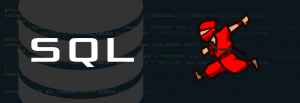
Quick Tip: 3 Ways To Truncate a File in Linux
Share
The following are 3 quick ways to delete the contents of (truncate) a file in Linux:
- Truncate
bash$ truncate -s 0 filename.txt - I/O Redirection
bash$ > filename.txt - /dev/null
bash$ cp /dev/null filename.txt
If you get an error it may be because the noclobber feature is enabled on your file. The noclobber feature of Linux is used to prevent accidental overwriting of files. It can be overridden by using either of the following depending on the shell you are using:
If you have any other tricks to truncate files, let me know.
Author
Stewart Schatz
More Stories
How to Use the rsync Command to Sync Files and Directories on Linux
The rsync command is one of the most powerful tools in the Linux toolkit for syncing files and directories. Whether...
How to Clean Up Empty Directories Using the find Command in Linux
Managing files and directories in Linux often involves dealing with empty directories that can clutter your workspace. Manually finding and...
Quick Tip: Determine Active Directory Account Status From The Windows Commandline
Use the following command to Determine Active Directory Account Status from the Windows Commandline without Powershell or any special software....
Where Is Java Installed?
Below are a few commands that can be run to determine where Java is installed on each Operating System: Windows:...
Windows God Mode… What!?!
Windows God Mode is a hidden feature in the Windows operating system that allows users to access all of the system’s control panel options and settings in a single place.
A Better SMTP Test
Several years ago, I posted about an SMTP Test that I was using. Well, lately, I've needed something with a...


Average Rating